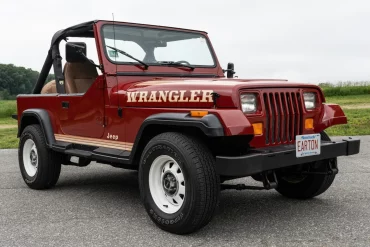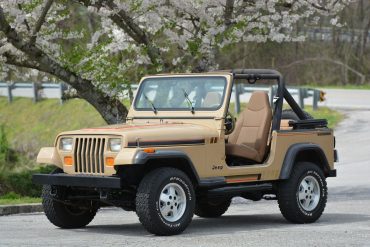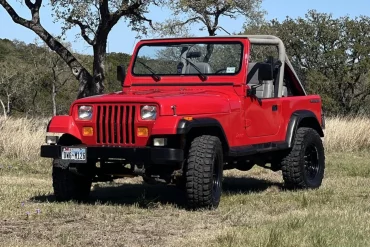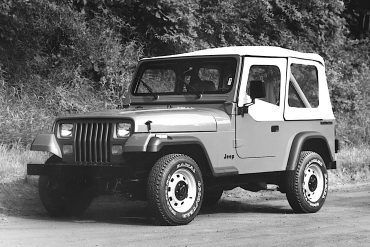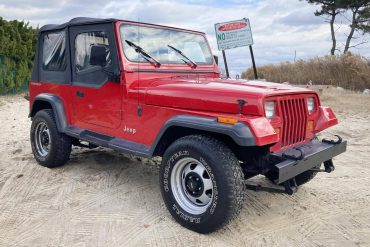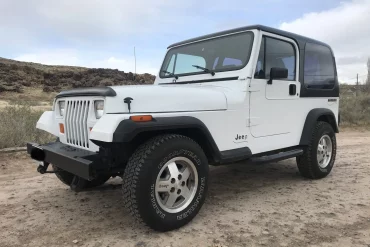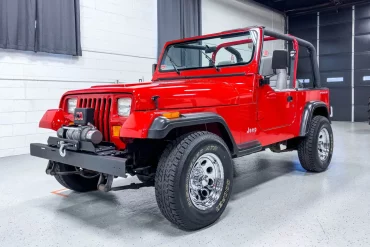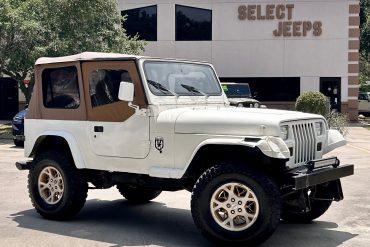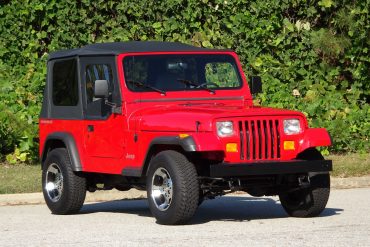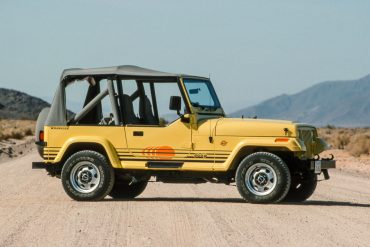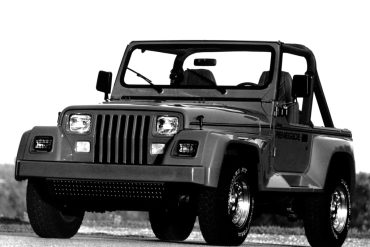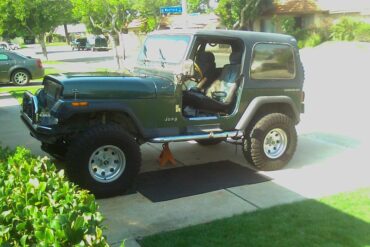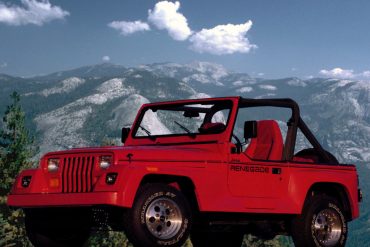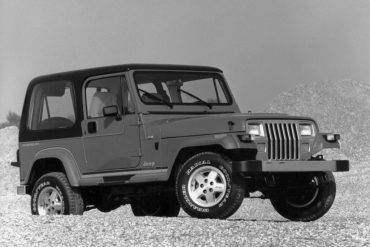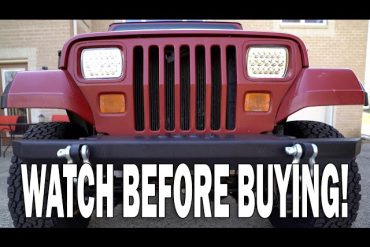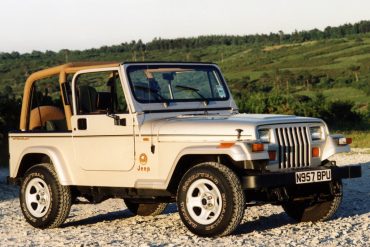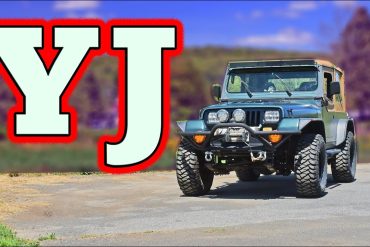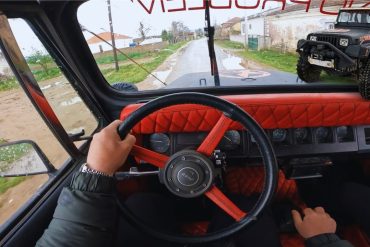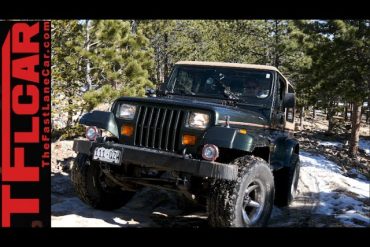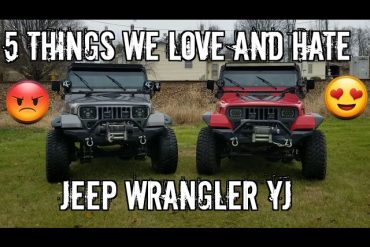The 1987 Jeep Wrangler: A New Chapter in Off-Road Excellence The year 1987 marked a significant milestone in the history of off-road vehicles with the introduction of the Jeep Wrangler....
Jeep "YJ" Wrangler
1987 - 1995 / First Generation
Model-Year Guides / Technical Information / Pics & Videos
The Jeep "YJ" Wrangler, introduced in 1986 and produced until 1995, marked a significant evolution in Jeep's off-road legacy. Known for its distinctive rectangular headlights and more modern design compared to its CJ predecessors, the YJ offered enhanced on-road comfort while maintaining robust off-road capabilities.
Jeep WL Grand Cherokee Guide
YJ Overview / Model Year Guides / YJ Research / YJ Pics & Videos / Everything Else
Looking to go deep on the Jeep YJ Wrangler? No problem - our comprehensive Jeep YJ guide covers everything that current and prospective owners need to know about the first-generation Wrangler.
The YJ Wrangler - An Overview
After the widespread success of the Jeep CJ platform, ranging from the earliest civilian Jeep–the Willys CJ-2A–to the renowned Kaiser/AMC Jeep CJ-5, CJ-6, CJ-7, and CJ-8 Scrambler, the model was in major need of a refresh. The engineers at AMC (American Motor Corporation), who’d owned Jeep since its 1970 buyout of Kaiser/Willys, got to work revamping the CJ-7 to compete with modern vehicles while retaining the key characteristics of the beloved CJ. The resulting creation was an amalgamation of CJ engineering and modern tech, featuring a nearly identical galvanized-steel tub fitted onto a stiffer chassis with a reinforced frame and beefier leaf springs. A new swing-out tailgate replaced the CJ’s truck-style hinged unit, while new front fenders, hood, grille, and square headlights marked the significant changes to the body. An all-new interior added much-needed comfort and amenities, making the YJ far more inviting for daily driving.
Only a year after the YJ’s release, the Chrysler corporation purchased AMC and the company's other subsidiaries, marking the beginning of the Chrysler-owned Jeep era that still exists today! The company continued production of AMC’s original design without significant upgrades until 1995 with the introduction of the legendary Jeep Wrangler TJ; however, the model did receive some notable mid-generational changes. 1991 saw the shift from the carbureted 4.2L inline 6-cylinder to the legendary 4.0L fuel-injected inline 6 that carried over to the TJ. Other mid-generation changes included upgrading both auto and manual transmissions (for the inline-6 models), which also introduced updated slave cylinder tech.
The YJ: What Changed?
While the Wrangler YJ wasn't a radical transformation from its predecessor, there were many small changes that either pleased or annoyed Jeepers. The most notable change was the switch from Jeep’s famous round headlights to a square headlight design. Jeep also wanted to design a vehicle with more creature comforts, which meant sacrificing many of its off-roading capabilities.
Many exterior features of the Wrangler YJ are still interchangeable with older Jeep CJ parts. The YJ still supported a leaf spring suspension and retained its 2-door design, although there were some major changes to the suspension, drivetrain, and other parts of the Jeep model including:
Less ground clearance and a wider track
Wider springs and added sway bars for improved handling
Wider windshield with square headlights (the biggest YJ model indicator)
Quieter transfer case
Automatic transmission was introduced in 1994 for 4-cylinder models
Throttle body fuel injection system (‘88 models and above)
Larger axle u-joints
Corrosion-resistant galvanized sheet metal frame that prevented rust
The ‘87 YJ might have served as a poor test dummy for the Wrangler line, but the Jeep Wrangler did add many features throughout the YJ generation we enjoy on JK models today. New features included fog lights on the Laredo, larger U-Joints on the last YJ model year, an extended roll bar on ‘92 models, and even anti-lock brakes became standard by 1993. The YJ Jeep length was approximately 164-184″ L x 74″ W x 73″ H, and many CJ owners are able to swap out their rusted frame for a brand new Wrangler YJ frame. As for towing, the YJ’s frame was rated to pull 2,200 lbs.
Engines & Transmissions
The Wrangler came with a 2.5 litre AMC I4 engine that was the ideal choice for many four-cylinder engine owners, with the six-cylinder engine also available that was capable of producing more power. In 1991, the powerful 180 horsepower 4.0-litre engine was introduced that became more popular than the previous model that offered approximately 58 less horsepower. Moreover, the newer engines also provided a more stable carburetor system than beforehand. In terms of options, owners had the ability to choose between three or five-speed automatic transmissions.
The Trim Levels & Special Editions
North American YJ/Wranglers were available in the following standard trims.
The base Wrangler was also referred to as "S" & "SE" at different points in the model run; for the first few years the back seat and rear bumperettes were optional, some years the 6cyl engine was an option, other years only the 4cyl was available in the "Base" model. An AM radio (later AM/FM stereo) with two speakers came standard, as did high-back vinyl bucket seats and a heater and blower. An AM/FM stereo, cassette player, and air conditioning were optional. In 1986, a basic Wrangler Base cost $8,995 MSRP.
The Laredo got chrome grille, bumpers, and trim, hard top and hard full doors, tinted windows, in 1988 cloth seats replaced the base model's vinyl, faux leather interior, body color fender flares and alloy wheels. An AM/FM stereo with cassette player, rear speaker sound bar, air conditioning, rear removable bench seat, and high-back cloth bucket seats all came standard.'LAREDO' decals adorned the hood on both sides or on the lower front fenders as part of the side stripes.
The Sport featured "sport" graphics and, beginning in 1991, a 4.0 L 242 CID inline-6-cylinder engine. An AM/FM stereo with two speakers and a rear removable bench seat came standard. A cassette player, rear speaker sound bar, cloth high-back bucket seats, and air conditioning were optional. The Sahara came standard with most available options, including body color fender flares and steel wheels, also included with the Sahara edition are special green trail-cloth seats with storage pockets, interior door panels with pockets, front bumper mounted fog lamps, and plastic ends on the front bumper). An AM/FM stereo with cassette player, rear speaker sound bar, unique cloth-and-vinyl high-back bucket seats, rear removable bench seat, exterior color steel wheels were standard on this model. 'Sahara Edition' decals adorned both front fenders.
There was the Rio Grande, which was available in champagne gold, moss green, white, along with the rare colors aqua pearl metallic, and Bright Mango; with a Pueblo themed interior trim package. This trim was only available in 1995, and was added to spice up the base 4-cylinder Wrangler 'S' models. A cassette player, rear speaker sound bar, and cloth high-back bucket seats came standard, and air conditioning and alloy wheels were all available on this model. Red-and-orange 'Rio Grande' decals adorned both rear quarter panels.
While most special edition Wranglers only enjoyed different trims and higher price tags, there were two that were a bit more special. The Islander replaced the Sporty decor and featured tropical stickers/decals, a center console, the option for a full or half door Jeep, and was available in both engines. The Islander only featured a great selection of tropical themed colors. The Islander also exemplified what it was made for: light off-roading on a beach.
Later on, the Renegade from 1990-1994 came along as an upgraded version of a classic vehicle. However, this time it came with a 4.0-litre I6 engine, a bumper made from fibreglass, and the choice of a rear defroster as well as a hard roof. Although, the Renegade did not provide much of an upgrade when it came to towing or off-roading, consisting of a standard YJ engine and body with only a few slight alterations. As a result, it has become one of the contentious automobiles this generation has seen.
Conclusion
With a stocky appearance, square headlights and an optional 4.0L six-cylinder engine, the Wrangler YJ is considered one of the most controversial Jeep lineups on the market. Replacing the classic CJ model, the Wrangler YJ ran into some early problems, but only improved with each subsequent edition. As a fellow Jeep owner, we take pride in our Jeeps and the heritage they came from. Whether it’s nostalgia for a different time or it’s radically different design, most Jeep YJ models still stand the test of time and are an easy restoration job. Considered the first generation of Jeep Wranglers, the YJ has stood the test of three decades for some owners.
Wrangler YJ Research
From lighting to suspension, physical dimensions to in car electronics, we have meticulously curated a incredible amount of YJ Wrangler resources, technical specifications, data sheets, and more. Loads of data and posts on every detail you could ever need.
Wrangler YJ Wallpapers & Videos
Discover a collection of stunning wallpapers showcasing the iconic YJ Wrangler. Whether you're a fan of SUVs, these high-resolution images capture the rugged elegance and timeless design of the first generation Wrangler. Immerse yourself in the world of the YJ Wrangler with our curated selection of videos. From overviews and custom projects to off-road challenges and owner's reviews.
Even More First Generation Jeep Wrangler Content
Our latest YJ generation Jeep Wrangler content that isn't organized above is found here! Keep up to date and check out everything else we have.

